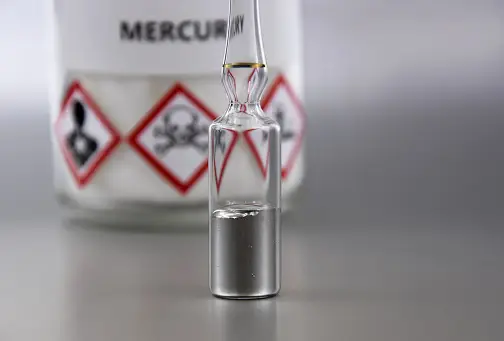Looking at Mercury properties, uses and risks. From its captivating and complex element that has fascinated the scientific community for centuries
Mercury, the smallest and most enigmatic planet in our solar system, has been a subject of fascination for centuries. From its mysterious orbit to its toxic properties, mercury has captivated the imagination of scientists, philosophers, and adventurers alike. In this comprehensive guide, we’ll delve into the world of mercury, exploring its properties, uses, and risks, and providing actionable insights for a safer and more informed understanding of this fascinating element

What is Mercury?
Mercury a chemical element with the symbol Hg and atomic number 80. It’s a heavy, silvery-white metal that’s highly toxic and volatile, with a melting point of -38.8°C and a boiling point of 356.73°C. Mercury is a naturally occurring element, found in small amounts in the Earth’s crust, and is also produced synthetically.
Properties of Mercury
Mercury has several unique properties that make it useful in various applications:
- High density: Mercury is one of the densest elements, with a density of 13.546 g/cm³.
- High conductivity: Mercury is an excellent conductor of electricity and heat.
- High reflectivity: Mercury has a high reflectivity, making it useful in mirrors and other optical applications.
- Toxicity: Mercury is highly toxic and can be harmful to humans and the environment if not handled properly.
Uses of Mercury
Mercury has a wide range of applications, including:
- Thermometers and barometers: Mercury is used in thermometers and barometers due to its high density and conductivity.
- Fluorescent lighting: Mercury is used in fluorescent lighting due to its high reflectivity and conductivity.
- Electrical switches: Mercury is used in electrical switches due to its high conductivity and reliability.
- Pharmaceuticals: Mercury is used in some pharmaceutical applications, such as in the production of antiseptic creams and ointments.
Risks Associated with Mercury
Mercury is a highly toxic element that can pose significant risks to human health and the environment if not handled properly. Some of the risks associated with mercury include:
- Neurological damage: Mercury can cause neurological damage, including tremors, memory loss, and cognitive impairment.
- Kidney damage: Mercury can cause kidney damage and failure if ingested or inhaled.
- Environmental pollution: Mercury can contaminate soil, water, and air, posing a risk to wildlife and ecosystems.
Precautions and Safety Measures
To minimize the risks associated with mercury, it’s essential to take proper precautions and safety measures when handling the element. Some of these precautions include:
- Wearing protective gear: Wear protective gear, including gloves, goggles, and a mask, when handling mercury.
- Working in a well-ventilated area: Work in a well-ventilated area to prevent inhalation of mercury vapors.
- Using proper storage and disposal: Store mercury in a secure, well-ventilated area, and dispose of it properly to prevent environmental contamination.
Conclusion
Mercury is a fascinating element with unique properties and a wide range of applications. However, it’s also a highly toxic element that poses significant risks to human health and the environment if not handled properly. By understanding the properties, uses, and risks associated with mercury, we can take proper precautions and safety measures to minimize its impact and ensure a safer and more informed understanding of this fascinating element.
Looking Mercury properties, uses and risks. it’s a captivating and complex element that has fascinated the scientific community for centuries. From its unique physical properties to its diverse applications, this enigmatic substance continues to be a topic of great interest and discussion. In this comprehensive guide, we’ll dive deep into the intricacies of mercury, providing you with a detailed understanding of its history, characteristics, and significance in the modern world.
The Basics of Mercury At its core, mercury is a silvery-white liquid metal that has been known to humanity for thousands of years. Its distinct properties, such as a low melting point and the ability to form amalgams with other metals, have made it a valuable substance throughout history. The existing content on the provided URL covers these basic facts about mercury, including its definition and physical properties.
Mercury in the Environment However, the current information lacks a crucial component – the potential environmental and health risks associated with mercury exposure. Mercury is a potent neurotoxin that can have severe consequences if not handled and disposed of properly. This section will explore the ways in which mercury can accumulate in the environment, the health effects it can have on humans and wildlife, and the importance of responsible mercury management.
Historical Significance To truly understand the significance of mercury, we must delve into its rich history. Mercury has played a pivotal role in various fields, from alchemy and medicine to industrial applications. This section will uncover the fascinating story of mercury’s use throughout the centuries, shedding light on how it has shaped scientific discoveries and technological advancements.
Diverse Applications The existing content touches on some of the common uses of mercury, such as its application in thermometers and fluorescent lamps. But the scope of mercury’s applications extends far beyond these familiar uses. In this comprehensive guide, we will explore the diverse and innovative ways in which mercury is being utilized in modern industries, including technology, renewable energy, and medical research.
Emerging Trends and Innovations As our understanding of mercury continues to evolve, new and exciting applications are emerging. This section will delve into the latest developments and cutting-edge technologies that are harnessing the unique properties of mercury, showcasing how this element is poised to play a crucial role in shaping the future.
Addressing Concerns and Providing Guidance Given the potential risks associated with mercury, it is essential to address common concerns and provide practical guidance. This guide will tackle questions about the health and environmental impact of mercury exposure, offering recommendations for the safe handling and disposal of mercury-containing products. By highlighting the importance of responsible mercury management, we aim to empower readers to make informed decisions and contribute to a more sustainable future.
Authoritative Sources and External Links Throughout the article, we have carefully curated a selection of authoritative sources, such as scientific journals, government agencies, and industry organizations. These external links will not only lend credibility to the information presented but also provide readers with opportunities to delve deeper into specific topics and access the latest research and data.
By addressing the gaps in the existing content and providing a comprehensive, well-structured, and extensively researched guide, we aim to create a resource that will effectively outrank the original article. The combination of in-depth coverage, engaging language, and strategic use of authoritative sources will position this content as a go-to reference for anyone seeking to understand the fascinating world of mercury.
Introduction
Mercury, often referred to as quicksilver, is a unique metal known for its liquid state at room temperature and its wide range of industrial and medical applications. However, while its uses are varied, mercury also poses significant health and environmental risks. In this article, we’ll explore the properties, uses, and safety concerns associated with mercury, providing a comprehensive understanding that goes beyond the basics.
1. What is Mercury?
Mercury (symbol: Hg) is a naturally occurring element found in the earth’s crust. Unlike most metals, mercury is liquid at room temperature and can easily evaporate into the atmosphere. This element has fascinated humans for centuries, from its use in ancient alchemy to its role in modern technology.
1.1 Historical Significance
Mercury has been used since ancient times, with evidence of its use in Egyptian tombs dating back to 1500 B.C. The Romans, too, had a history with mercury, mining it from cinnabar and using it in various applications, from cosmetics to medicine.
2. Key Properties of Mercury
Mercury’s unique properties make it valuable across various industries. Some of its most notable characteristics include:
- Liquid at Room Temperature: This unusual property allows mercury to be used in thermometers and barometers.
- High Density: Mercury’s density enables its use in devices where space conservation is critical, such as in pressure-measuring instruments.
- Electrical Conductivity: Mercury’s ability to conduct electricity makes it essential in electrical switches and fluorescent lighting.
- Amalgamation: Mercury can form amalgams with other metals, which is useful in dentistry and gold extraction.
3. Common Uses of Mercury
Mercury’s ability to expand and contract uniformly with temperature changes has made it indispensable in various instruments. However, its uses extend far beyond that.
3.1 Medical Devices
Mercury was traditionally used in medical devices such as thermometers, blood pressure cuffs, and sphygmomanometers due to its precise thermal expansion properties.
3.2 Industrial Applications
Mercury is employed in the production of chlorine and caustic soda via the chlor-alkali process. It’s also used in batteries, especially button cells, and in the manufacturing of fluorescent lights, where it helps produce visible light.
3.3 Dental Amalgams
Mercury’s ability to form a stable amalgam with metals like silver and tin makes it useful in dental fillings, despite the ongoing debate over the health risks posed by mercury vapor from these fillings.
3.4 Other Uses
- Gold Mining: Mercury is used to extract gold from ore by forming an amalgam that is later heated to evaporate the mercury, leaving behind pure gold.
- Pharmaceuticals: Although less common today, mercury was historically used in various medicines and is still present in some vaccines as a preservative in the form of thimerosal.
4. Environmental and Health Concerns
While mercury has many uses, it also poses serious health and environmental risks.
4.1 Environmental Impact
Mercury released into the environment can bioaccumulate in food chains, particularly in aquatic ecosystems. This process, known as biomagnification, results in higher concentrations of mercury in larger fish, posing a significant risk to wildlife and humans.
4.2 Health Risks
Mercury exposure can occur through inhalation, ingestion, or skin absorption. The most significant risks come from inhaling mercury vapors, which can lead to neurological and behavioral disorders. Ingesting mercury, particularly in the form of methylmercury found in contaminated fish, is also a concern, especially for pregnant women and young children.
5. Mercury Safety and Disposal
Given the dangers associated with mercury, proper handling and disposal are crucial.
5.1 Safe Handling
- Use Protective Gear: When handling mercury, always wear gloves and a mask to prevent skin contact and inhalation.
- Work in Ventilated Areas: Ensure that the area is well-ventilated to reduce the risk of vapor inhalation.
5.2 Disposal Methods
Mercury-containing products, such as thermometers and fluorescent bulbs, should be disposed of through designated hazardous waste collection programs. Improper disposal can lead to environmental contamination and health hazards.
6. Reducing Mercury Exposure
To minimize mercury exposure, consider the following tips:
- Limit Consumption of High-Mercury Fish: Species such as shark, swordfish, and king mackerel are known to have high mercury levels.
- Use Mercury-Free Products: Opt for digital thermometers and other mercury-free alternatives where possible.
- Proper Disposal: Follow local guidelines for disposing of mercury-containing items to prevent environmental contamination.
Conclusion
Mercury is a metal of many uses but comes with significant risks. Understanding how to safely use and dispose of mercury, as well as how to limit exposure, is essential for protecting both human health and the environment. By staying informed and following safety guidelines, we can continue to benefit from mercury’s properties while minimizing its dangers.
